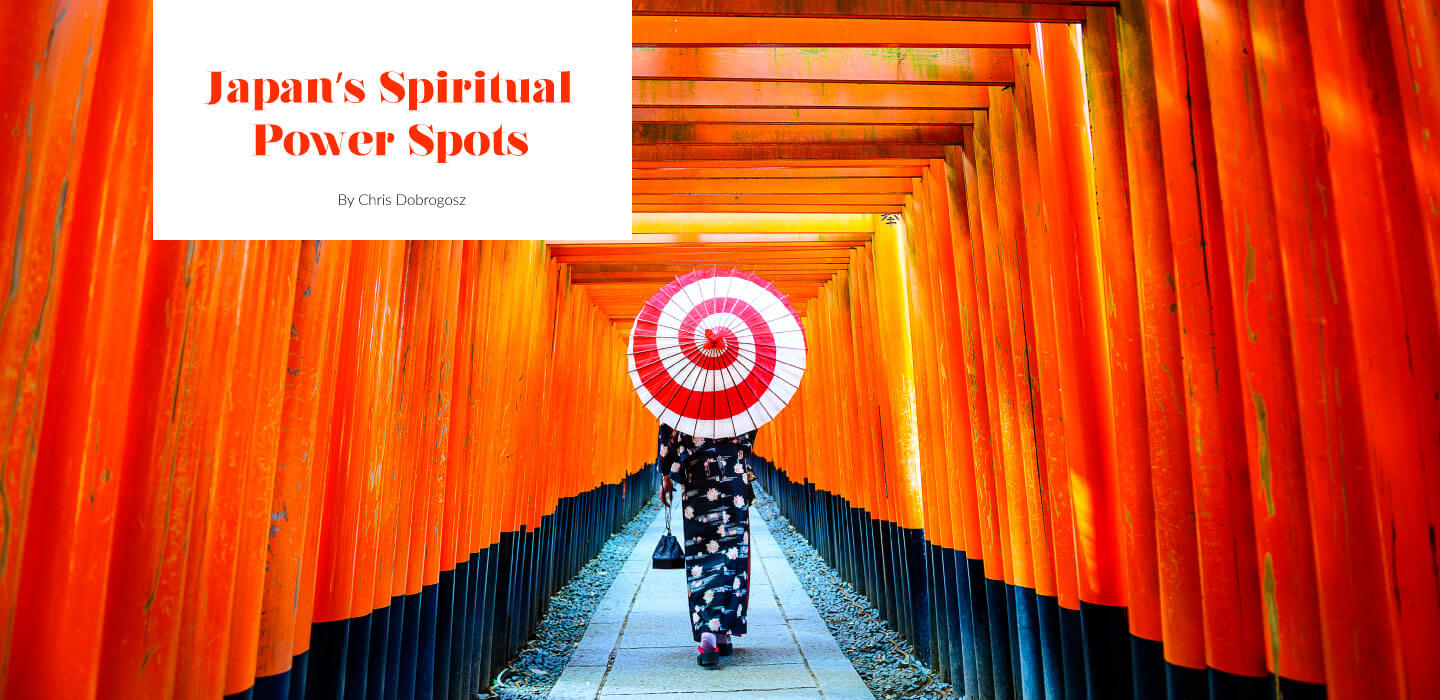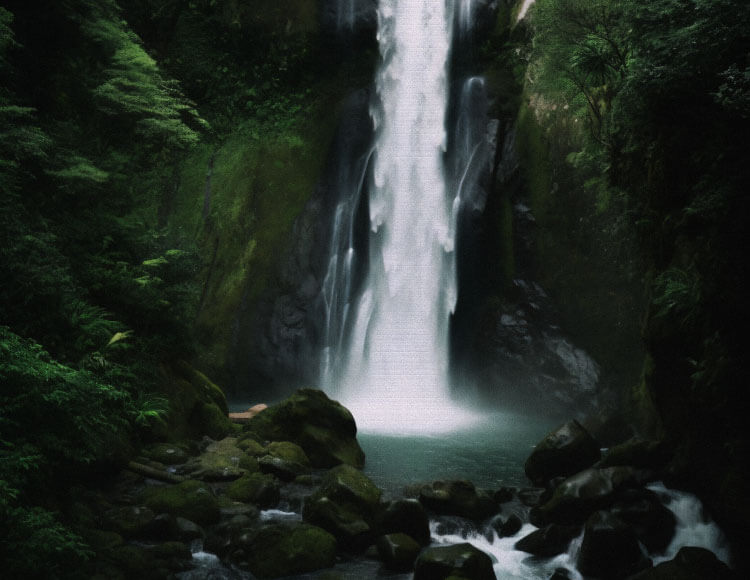Japan is a place like no other. First-time travelers will immediately notice its clean and walkable cities, its world-class rail transit and its lively commerce, among other things. But Japan is also a country with a long, proud spiritual history. Multiple religious faiths, most prominently Buddhism and Shinto, as well as older indigenous beliefs, make up the cultural landscape. If you know where to look, a multitude of spiritual hot spots, known locally as “power spots,” can be found all over Japan. Here are just a few examples.


Fushimi Inari
Mount Inari, named after a prominent Shinto deity, stands over the historic city of Kyoto. From
its peak, most of the city is visible, and the combination of history and modernity that defines Kyoto is clear on even the cloudiest day. But this isn’t just any normal hiking trail. It’s the home of the Fushimi Inari shrine, one of Japan’s most recognizable power spots.
At the base of the mountain, vendors sell an assortment of tasty snacks to passers-by. Thick chunks of crabmeat on skewers are popular among hikers, who have either just finished scaling the mountain or are preparing to do so with a quick protein boost. As you begin your ascent, you will notice stone statues of kitsune (fox spirits) are a common theme.
Most noticeably, thousands of torii (wooden gates), each adorned with bright vermillion paint, are there o guide you all the way up to the summit. As you climb higher, the path splits into different routes of varying distances, each of them lined with rows of golden torii. Some paths are steeper and more physically taxing than others, but the shining gates make it hard to lose your way.
There aren’t many places on Earth where a serene silence can suddenly give way to a cacophony of raven calls, only to then be supplanted by the softer, more ghostly sound of owls hooting as the sun sets over the western side of the peak. Night and day have wildly different sound palates here. The melodic sound of rushing water harmonizes with the rustling of leaves, creating a soothing sort of natural music that stills the mind and, at least momentarily, relieves it of its worldly anxieties.

Mount Fuji
Probably the most iconic and breathtaking symbol of Japan, Mount Fuji is a sight to behold, even from a distance. It’s not surprising to learn that ancient people believed it to be the home of powerful gods and spirits. If you’re lucky enough to see Fuji up close, the tranquil landscape will make it ever more apparent why this site has been revered as sacred for centuries. Towering at a lofty 12,000 feet, the dormant volcano offers an unforgettable challenge to hikers, photographers and spiritual pilgrims. At sunrise, you can witness the phenomenon known as goraikou, a moment of ethereal beauty as the first beams of sunlight creep over the eastern horizon and illuminate the summit with their radiant glow. Trekking up the volcanic slopes can be challenging, even for experienced hikers, but the emotional and spiritual rewards that await are beyond compare.
While scaling the mountain, adventurers can find stations for rest and sustenance (vending machines filled with healthy snacks and beverages are a common sight in Japan). With its pristine scenery and cultural significance, scaling Fuji is an exhilarating testament to the indomitable spirit of Japan.

Kumano Sanzan, Nachi Falls
Located in the enchanting Kumano region of southern Japan, the Kumano Sanzen at Mount Nachi is a sacred pilgrimage route shrouded in mystique and natural splendor. Comprising three grand shrines – Kumano Hongu Taisha, Kumano Hayatama Taisha and Kumano Nachi Taisha – this spiritual power spot beckons travelers from all over the world with its stunning views. Setting off on the Kumano Kodo trail, hikers traverse ancient stone paths lined with mighty cedar trees, gentle streams and mesmerizing waterfalls. If visitors journey deep enough into the lush forest, they can find Nachi Falls, Japan’s tallest waterfall, which covers the surrounding fauna with a soft layer of mist. Whether it’s the cool, misty breeze hitting your face or the sound of bird song echoing over the ambient flow of the waterfall, it’s easy for visitors to see why this place was designated a UNESCO World Heritage Site. Whether you wish to stop and meditate by the crystal-clear spring or simply press onward, a place of this magnitude is not easily forgotten.

Hanazono Shrine
Tucked away in Tokyo’s busy Shinjuku ward, wandering into the Hanazono Shrine feels like stepping back in time. While the exact origins of this ancient shrine remain unknown, it has stood in the same place for centuries and is still visited by hundreds of locals every day. Locals line up outside the shrine to say prayers and give offerings. The ritual is curious to unfamiliar eyes. A slight bow, two loud handclaps, the pull of a rope to ring a suspended bell, a few coins tossed into a wooden trough and then a final bow before departing. One by one, each visitor goes through the same motions, paying their respects to this ancient spiritual landmark hidden in the middle of the world’s largest city. Another Inari shrine, statues of fox spirits and golden torii gates beautify this discreet power spot, along with several cherry blossom trees in the spring. It is considered the protective shrine of Shinjuku, bringing safety and prosperity to its residents. Just a short walk from the busiest train station on earth, the shrine is a testament to the city’s incredible urban design – a peaceful spot for prayer and contemplation in the middle of this ultra-modern metropolis. Whether just passing through or looking for some quiet refuge in this bustling city, the small shrine punches well above its weight, and reminds locals and tourists alike of the country’s rich spiritual history.